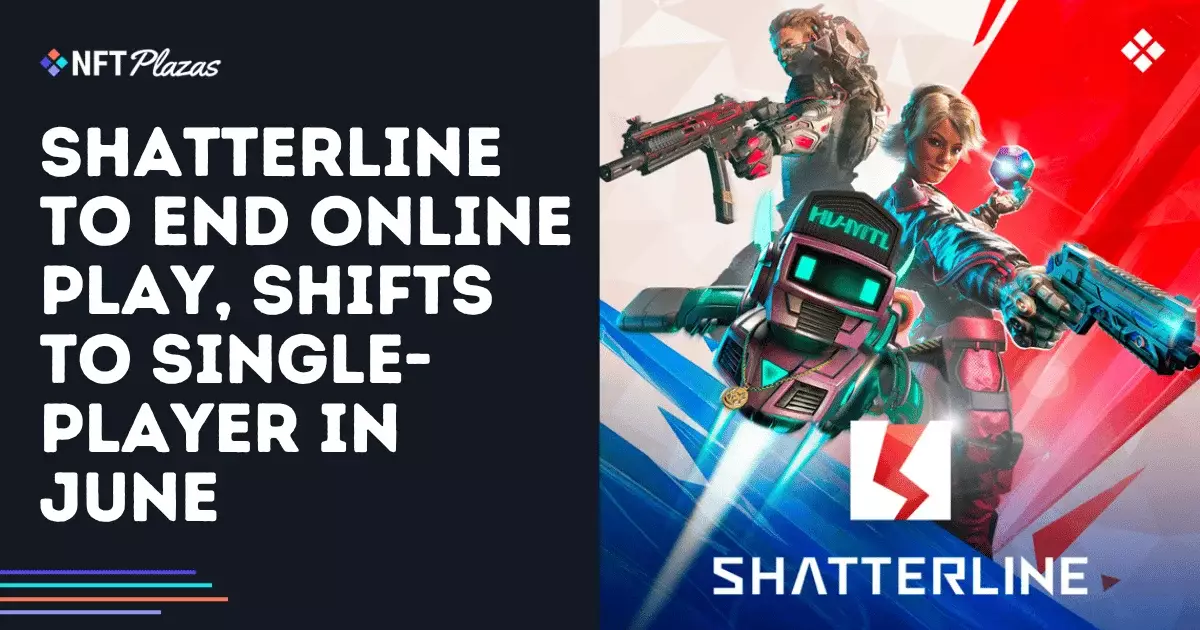In a shocking turn of events, Frag Lab has announced that its ambitious online multiplayer shooter, Shatterline, will be pulling the plug on its online servers, effectively relegating the game to a single-player experience from June 26. This move underscores a growing trend in the gaming industry where free-to-play models are unable to sustain themselves in a competitive market. While the studio intends to pivot to a pay-to-own model, the fact that Shatterline struggled to attract a substantial player base raises alarming questions about the viability of online multiplayer titles, especially in the context of evolving gaming landscapes.
Monetization Woes and Player Discontent
Shatterline’s issues are not solely rooted in player numbers; the game’s monetization strategy has also proven ineffective. Despite launching on the Epic Games Store and attempting to maintain user engagement through in-game purchases, the studio faced a backlash. Reports of players feeling that blockchain elements were poorly implemented have exacerbated existing frustration. This not only reflects poorly on the developers but also raises valid concerns about whether the gaming community is ready for web3 integrations that disrupt traditional gaming experiences. If the monetization strategy fails to align with player expectations, it’s a telltale sign that developers may be out of touch with their consumer base.
A Shift That Reflects Broader Trends
Frag Lab’s decision to focus exclusively on single-player content speaks volumes about broader industry shifts. As many multiplayer games experience dwindling player counts, the pivot to single-player modes is becoming a safety net for developers seeking to salvage their projects. This isn’t just an isolated incident — it’s a trend that highlights the rising impossibility of sustaining a live-service environment when player engagement plummets. It’s telling that Frag Lab chose to announce the server shutdown after disabling in-game purchases; this signals a shift away from player-driven cash flow models altogether.
Implications for Future Game Development
The ramifications of Shatterline’s transition extend beyond just one title. This shift could serve as a cautionary tale for upcoming developers who are considering leveraging live-service models. What does it say about the future of multiplayer gaming when established titles cannot attract enough active players to sustain their ecosystems? While it is understandable that Frag Lab aims to enhance single-player content, the question remains whether this pivot will resonate with a broader gaming audience tired of disrupted promises and experiences.
A Problematic Web3 Integration
Moreover, the skepticism surrounding Shatterline’s blockchain elements showcases an urgent need for developers to re-evaluate how they approach integration within their games. The criticism suggests that perhaps developers are too eager to incorporate trendy technologies without sufficient understanding of their actual utility. As the fad of web3 fades, the gaming community could find itself entrenched in a cycle where enthusiasm for innovative technology fails to translate into profound player engagement or satisfaction.
By transitioning from a multiplayer focus to a single-player model, Shatterline might survive, but it casts doubt on the resilience of multiplayer games as a whole. This serves as a decisive indication that upheaval in gaming is far from over, raising more questions than answers about the future of player-driven experiences.


Leave a Reply